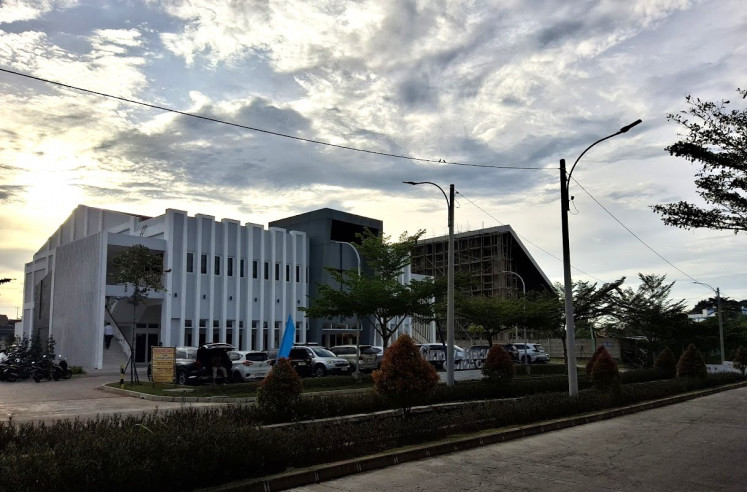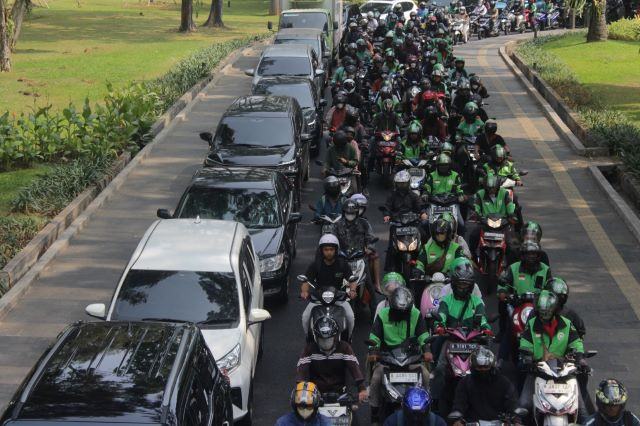Popular Reads
Top Results
Can't find what you're looking for?
View all search resultsPopular Reads
Top Results
Can't find what you're looking for?
View all search resultsUnderstanding diabetes and its impact on public health in Indonesia
Many people remain either unaware they have diabetes or are being treated inadequately, which fuels the disease and increases the risk for serious, even life-threatening, complications.
Change text size
Gift Premium Articles
to Anyone
 A customer passes by a rack of sweetened drinks in a retail supermarket in Jakarta on Dec. 14, 2023. A survey from the Indonesian Consumers Foundation (YLKI) revealed that 58 percent of 800 respondents supports the plan to impose an excise tax on sweetened beverages to control their consumption and prevent diabetes prevalence among children, which has increased by 70 times since 2010. (Antara/Cahya Sari)
A customer passes by a rack of sweetened drinks in a retail supermarket in Jakarta on Dec. 14, 2023. A survey from the Indonesian Consumers Foundation (YLKI) revealed that 58 percent of 800 respondents supports the plan to impose an excise tax on sweetened beverages to control their consumption and prevent diabetes prevalence among children, which has increased by 70 times since 2010. (Antara/Cahya Sari)
I
ndonesia, a country with over 270 million people, is facing an alarming rise in the prevalence of diabetes. Data from Halodoc healthcare platform and national health surveys indicate that at least 19.5 million Indonesians have Type 2 diabetes, both diagnosed and undiagnosed.
This suggests an epidemic that has been rising and shows no signs of abating. Type 2 diabetes is the most prevalent form of the disease globally and in Indonesia; it results from the body's inability to effectively use insulin, a condition often brought about by obesity and lack of physical activity.
Of the 19.5 million estimated to have diabetes, only 26 percent of them have been diagnosed, indicating a big gap that needs to be filled in awareness and a lack of access to medical care. Undiagnosed cases are very vulnerable because, over time, uncontrolled diabetes will lead to serious complications.
Of those who knew their status, 54 percent received medical care, while 80 percent of these patients depended on public healthcare systems. This represents a stressed healthcare system whose primary facilities and hospitals cannot keep pace with the increase in demand.
The high prevalence of diabetes in the country is attributed to several factors, such as urbanization, changes in food habits, greater processed foods and sugar intake, sedentary lifestyles and an aging population. Dietary changes, sedentary lifestyle, general unawareness of the disease and access to healthcare services heighten the burden.
A considerable proportion of the population consists of people who are embarking on sedentary lifestyles and wrong eating priorities, which is again increasing the diabetes burden.
This increasing prevalence of diabetes in Indonesia has far-reaching consequences for public health, like an increase in morbidity and mortality. Diabetes is regarded as a high risk for a set of other health conditions; most importantly, cardiovascular diseases are usually the leading causes of death in the country.
Among the important challenges Indonesia faces, underdiagnosis and poor management of diabetes remain very high. As a result, many people remain either unaware of the condition or are being treated inadequately, which fuels the disease and increases the risk for serious, even life-threatening, complications.
The economic consequences of diabetes in Indonesia are also of grave concern. Because the most prevalent age groups within the catchment area of this disease are those of productive working age, the impact is directly felt on workforce productivity and the stability of the general economy. Uncontrolled diabetes results in increased treatment costs and, further, indirect costs from absenteeism, disability and early retirement.
In addition, high complication rates in diabetic patients necessitate more expensive treatments and longer hospitalizations. The economic strain of lost productivity further heightens this due to illness or disability among young adults. Thus, there is an urgent need for multidisciplinary public health strategies that will focus on prevention, early diagnosis and effective management of diabetes to avert serious health and economic impacts.
The main factor for this increasing prevalence is ignorance of the disease and its risk factors. Most are unaware of the importance of regular blood sugar monitoring and early diagnosis; thus, treatment is always delayed. Besides, there is a lack of resources both in healthcare infrastructure and trained medical personnel to manage the growing diabetes epidemic effectively.
Underdiagnosis and the inability to control diabetes in Indonesia are also related to poor healthcare access within rural areas of the country, where many cannot travel to health facilities or see a doctor regularly.
The most emerging and very disturbing trend is diabetes in young adults. This trend is accelerated by rapid urbanization with changing lifestyles, including sedentary professions, increased processed and fast-food intake and reduced physical activities. These lifestyle changes make the higher threat of Type 2 diabetes increasingly possible at an early age in Indonesian youth.
This will have important economic consequences, where productivity will be lost and the medical cost of diabetes will continue to rise. Most young adults who have diabetes become unable to work at full capacity due to complications of the disease, hence resulting in absenteeism or reduced workforce participation. The loss of productivity has broad economic ramifications on families, businesses and the overall economy.
Rising trends of diabetes in Indonesia pose a serious public health challenge. The bigger the population living with undetected or uncontrolled diabetes, the greater the morbidity and mortality, thereby increasing the healthcare burden for the country.
The vast number of complications comprising cardiovascular disease, kidney failure and amputations further raises the need for an urgently better approach to diagnosis, treatment and awareness. In the face of a growing diabetes epidemic, public health investments in early prevention through education and lifestyle intervention should be made.
Firstly, raising awareness about risk factors for diabetes, adopting healthier lifestyles and improving access to health services and tools for disease diagnosis and treatment in rural areas have alleviated some of the disease's societal burdens.
Moreover, improving access to care through financial means will ensure that more Indonesians receive the treatment they need by expanding health insurance coverage and reducing out-of-pocket expenditures. While the prevalence continues to increase, especially in younger age groups, comprehensive public health strategies are even more urgent.
The diabetes situation can only be improved through collaborative efforts of the government, healthcare providers and the community to build a better future for Indonesia.
***
Micah Wanandi is a student of Business and Public Health at the University of California, Irvine, United States. Dicky Tahapary is an internal medicine specialist, School of Medicine, University of Indonesia, Jakarta,










